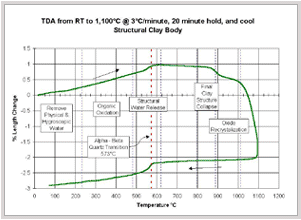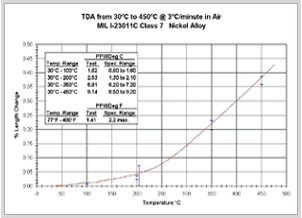오톤사 제품들
Ortoncone Products
|
 |
 |
| |
| Thermal Dilatometric
Analysis (TDA), often called "dilatometry",
measures the dimensional change of a material (ceramics,
glasses, metals, composites, carbon/graphite, minerals,
polymers, and others) as a function of temperature.This
test determines both reversible and irreversible changes
in length (expansion and shrinkage) during |
|
|
heating and cooling, and
pinpoints where reactions occur that cause expansion or contraction.
Samples are quickly and easily measured for determining firing
ranges and firing schedules, measuring thermal expansion ranges
for glaze fits, and measuring thermal expansion ranges for
R&D, QC or product certification. Orton dilatometers are
used for ASTM E-228 testing.
|
| |
 |
|
| |
 |
| |
|
| |
| Coefficient
of Thermal Expansion (CTE), softening point, glass
transition temperature, curie point, crystalline
transformation, phase transition, shrinkage, warping,
bloating, sintering rate, isothermal creep, stress
relaxation. |
| The test results
are a graph of the TDA signal (converted to percent
length change) on the Y-axis plotted versus the
sample temperature in °C on the X-axis. Sample
graphs of enhanced output are shown below. |
|
 |
 |
 |
| Ceramics - ASTM E-228 |
Metals MIL I-23011C
Class 7 |
|
| - Range
of TDA Test Conditions |
| |
 |
|
-150°C to +1,600°C
|
 |
|
Ambient, Inert, Reducing Atmospheres |
 |
|
Simple Heat-up and Cool-down, Iso-thermal
Holds, Programmed Thermal Cycles |
|
| |
 |
|
|
|
|
|
|
|
|
| |
| |
| |
|
|
